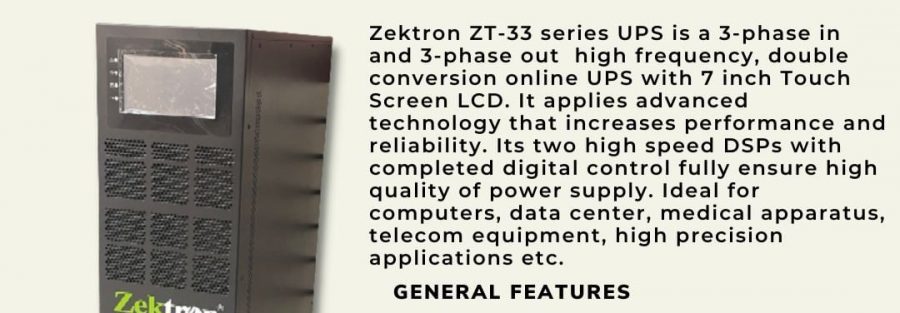Uninterruptible Power Supplies (UPS) or UPS Systems as they are also known provide two important power solutions roles. UPS systems provide a source of standby back-up power when the mains power supply fails, and they also provide conditioning to remove mains borne power problems – sags, surges, brownouts, spikes and electrical noise. Power problems can lead to IT system hardware failure, system malfunctions and corrupt data. In today’s 24/7 business continuity conscious world, demand for UPS systems continues to grow at an exponential rate.
There are ofcourse different types of UPS topology and these include on-line double-conversion UPS, line interactive UPS and Standby or Off-line UPS. Selection is often based upon price budget considerations and the level of availability and resilience required. However it can also be useful to consider UPS selection by the application environment the UPS system will find itself within.
PC UPS: SMALL OFFICE HOME OFFICE (SOHO) ICT ENVIRONMENTS
Information and Communications Technology (ICT) environments typically include PCs, POS Terminals and small File Servers and run from 600VA-3000VA. These are ‘fit and forget’ UPS systems with a small internal battery pack. They will provide protection from sags, surges, brownouts, spikes and electrical noise and a short duration runtime on mains power failure. Typical applications include: PCs, workstations, small file servers, Electronic Point of Sale (EPoS) terminals, Small Office and Home Office (SoHo) systems, Hi-Fis, satellite systems, routers, modems and switches. The UPS systems will be line interactive UPS or standby UPS.
NETWORK UPS: SMALL-SIZED ICT ENVIRONMENTS
UPS systems in this size range (1-10kVA) will be powering network applications including file servers, telecoms switches, network servers, Blade servers, PABX, PoE, VOIP and PABX telecoms systems. These UPS will be on-line double conversion systems or line interactive UPS with some offering options for additional battery runtime packs. Formats include: tower UPS, floor standing UPS, rackmount UPS and combo UPS capable of either tower or 19″ rackmount installation.
COMMS AND SERVER ROOM UPS: MEDIUM-SIZED ICT ENVIRONMENTS
Uninterruptible power supplies sized 3-20kVA typically power larger ICT installations including server and comms rooms, Blade servers, virtual PABx and file servers. UPS systems within this range include floor, rackmount and combo formats, with a single-phase output and options for three-phase inputs. Models up to 3kVA will generally plug in using industrial 16A commando sockets, with larger models requiring electrical installation by a suitably qualified electrical engineer (working to the latest IEE Regulations), and then commissioning by a certified engineer.
UPS for this type of application include off-line, line interactive and on-line designs up to 3kVA. On-line uninterruptible power supplies in this range are transformerless so as to achieve a small footprint, minimal weight and low noise and heat output. They are usually located in computer rooms, next to protected equipment. However, their reduced size means fewer output sockets, so in highly populated environments a greater number may be required, which will have an impact on capital and operating costs.
DATACENTRE UPS: LARGE-SIZED ICT ENVIRONMENTS
Large UPS systems run from 20-800kVA and typically form the backbone of large power solutions projects protecting applications such as data centers and telecoms switching centres. These uninterruptible power supplies tend to be installed as part of a centralised or decentralised power protection plan, offering N+1 parallel modules for extra resilience and a full turn-key package including electrical installation and ongoing remote monitoring and maintenance plans.
INDUSTRIAL UPS SYSTEMS
On-line uninterruptible power supplies are typically available in transformer-based and transformerless designs. The transformer-based are ideal for use within industrial applications because of their more robust design; a transformer performs the essential mains conditioning role in place of electronics. Larger three-phase UPS systems may also provide a number of other electrical specification options including 6-pulse or 12-pulse rectifiers, and even IGBT (Integrated Gate Bipolar Transistor) based rectifiers to provide very high input efficiencies and low Total Harmonic Distortion (THDi) inputs.



